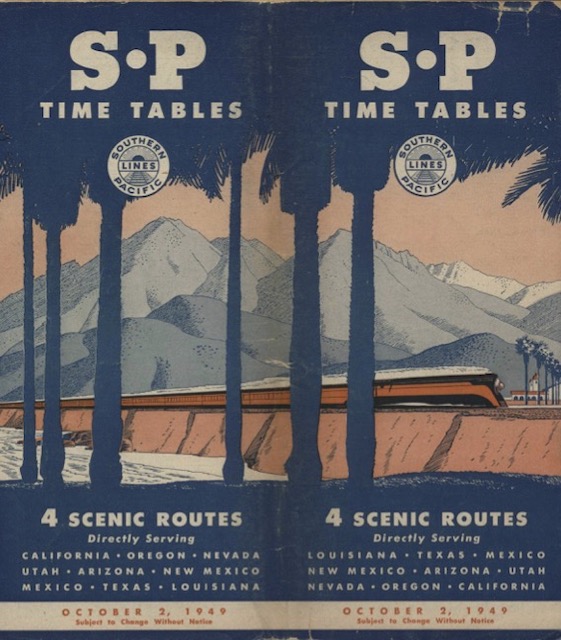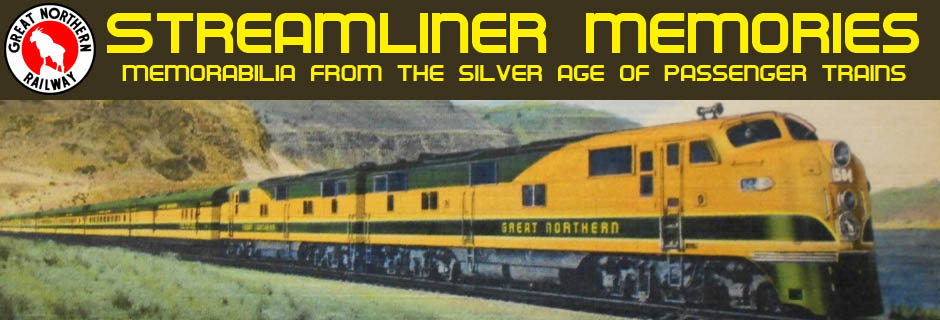The front cover of this timetable advertises the Starlight, a “new, overnight ‘fun’ train between San Francisco and Los Angeles.” The all-coach train was fully streamlined, “just like the Daylights, only at night.” The train came equipped with a tavern-lounge car, an extra-fare parlor-observation car, and a coffee shop car that was open all night.
 Click image to download a 23.3-MB PDF of this 52-page timetable.
Click image to download a 23.3-MB PDF of this 52-page timetable.
The train left Los Angeles and San Francisco 45 minutes before the all-Pullman Lark and arrived at the opposite end two hours and 15 minutes before the Lark. This allowed passengers who were continuing north to connect with the Shasta Daylight, a connection that was missed by the Lark.
Gone from the timetable was the Noon Daylight, a train that had been created in 1940 when Southern Pacific re-equipped the original Daylight (which left its respective terminuses at 8:15 am) and used the older cars for a train that left at noon (later 12:15 pm). The latter train didn’t arrive at the other end until nearly 10 pm, which apparently wasn’t too popular.
The disappearance of the Noon Daylight and appearance of the Starlight was no coincidence, as SP simply used the same equipment, at least initially. The railroad apparently repainted the cars two-tone grey instead of the famous red-and-orange Daylight colors. This must have been done one car at a time as there was no downtime between the termination of the Noon Daylight on October 1 and the inauguration of the Starlight on October 2.
Though advertised as an all-coach train, during the Korean War SP added some heavyweight sleeping cars that were primarily for military use. They weren’t listed in the timetables, but if space was available members of the public could upgrade to a berth, which someone might want to do after they’d had a few drinks in the tavern car. In July, 1957, SP combined the Starlight and Lark into a single train, and the “starlight” name disappeared until Amtrak took over.

Inside the February 1949 timetable SP mentions the “90,000 men and women of Southern Pacific,” while only 8 months later it’s 77,000. That’s a reduction in force of nearly 15%. One can speculate on whether it’s due to dieselization, retirements of trainmen who were asked to stay on to support the war effort, layoffs due to business conditions, or a combination of all 3. Who knows? Just as is the case for most other businesses, the largest single expense item is payroll it seems.